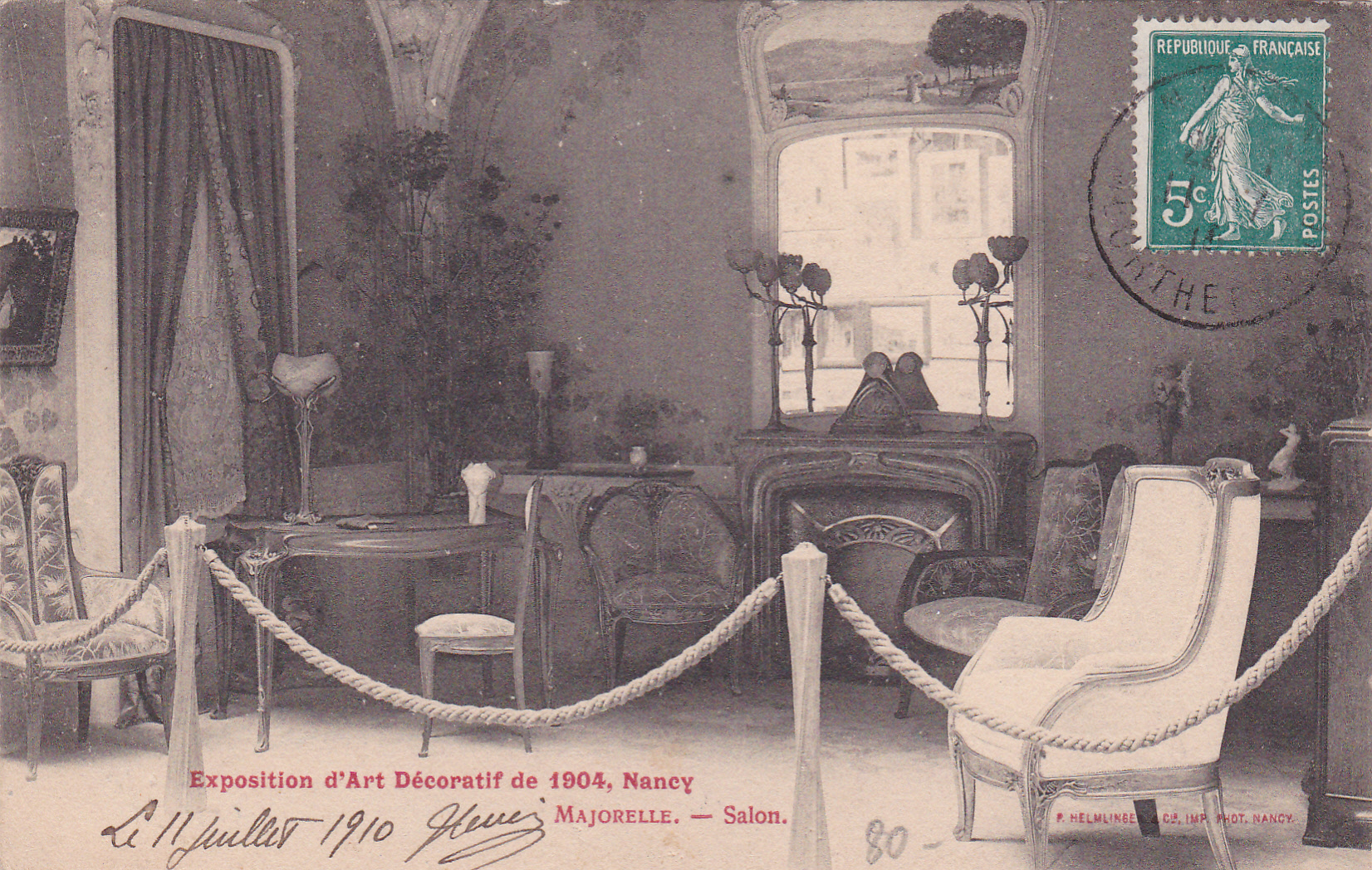47 ¾ in (121.3 cm) high, 63 ¾ in (162 cm) wide, 22 in (56 cm) deep
Literature
Alastair Duncan, Louis Majorelle: Master of Art Nouveau Design, 1991, p.88
The son of a furniture maker, Louis Majorelle (1859-1926) began training from an early age. In 1877, he travelled to Paris, where he studied architecture and painting for two years at the École des Beaux-Arts, before returning to Nancy on the death of his father to take over the family business. Initially he continued in his father’s footsteps, producing the pastiches of Louis XIV, XV, and XVI furniture that had been popular in France since the early 19th century. This hybrid imitative style was widely criticised, known as ‘Tous les Louis’ or, by 1870, ‘Le Style sans Style’. Majorelle’s work in this style was of high quality, but without inspiration.
This changed dramatically in the 1890s. Influenced by Émile Gallé, also based in Nancy, Majorelle began to incorporate into his work the naturalistic forms characteristic of the developing Art Nouveau style. In 1900, he exhibited his new works at the Paris Exposition Universelle, and received high acclaim. His pieces were grand and extravagant, and on a large scale: massive pieces of furniture with motifs that carried through entire suites of room decoration. His first series was based on the nénaphur (waterlily) motif, and was soon followed by the orchidée (orchid) series, to which this fireplace belongs. These were his best-known and most opulent designs, executed on the grandest scale. Majorelle added a metalwork atelier to his workshop in the 1890s which created fittings and mounts to his instruction, thus allowing the flowing motif to be expressed uninterrupted throughout his pieces. His designs for metalwork evolved beyond furniture mounts and he was responsible for many of the ironwork balconies, railings, and exterior details on buildings of this period throughout Nancy.
As his business took off, his company issued a number of catalogues (most of which are undated) between 1904 and 1914, with photographs showing these suites of furniture within complete decorative schemes. Similar versions of this fireplace, Aux Orchidées, feature in a number of plates from these catalogues, often paired with a matching mirror backpiece. Where the fireplace is shown amidst several pieces of furniture also based on the orchidée motif, one can see the Art Nouveau fluidity of line unconfined, extending over an entire interior.
The quality of Majorelle’s work is emphasised by the materials he used, including marbles and gilt-bronze, as shown here. His technical expertise is evident in his mastery of the difficult task of mounting bronze to marble, here so effortlessly achieved. In this piece his choice of rich French Salome marble demonstrates his ability to choose materials that maximise the aesthetic impact of his work.
In 1901, Majorelle’s success led him to become a founding member and vice-president of the École de Nancy, which was headed by Gallé until his death in 1904. In that year, Majorelle achieved worldwide recognition when he won the Grand Prize at the St Louis World Fair in America. The years from 1898 to 1908 were his most productive period, highlighted by the introduction of his famous Orchidée edition. Characteristic of these furniture designs was the application of highly sculptural gilt bronze mounts, beautifully cast and finished. This work was so distinctive that other makers of the school of Nancy dared not imitate.
Masterworks such as this fireplace were produced in very small editions, no more than a handful of examples. Another from this edition, the Orchidée desk, one of Majorelle’s most important works, has gilt-bronze mounts similar to those on this fireplace. The desk is now in the Horiuchi Louis C. Tiffany Garden Museum in Japan.






















